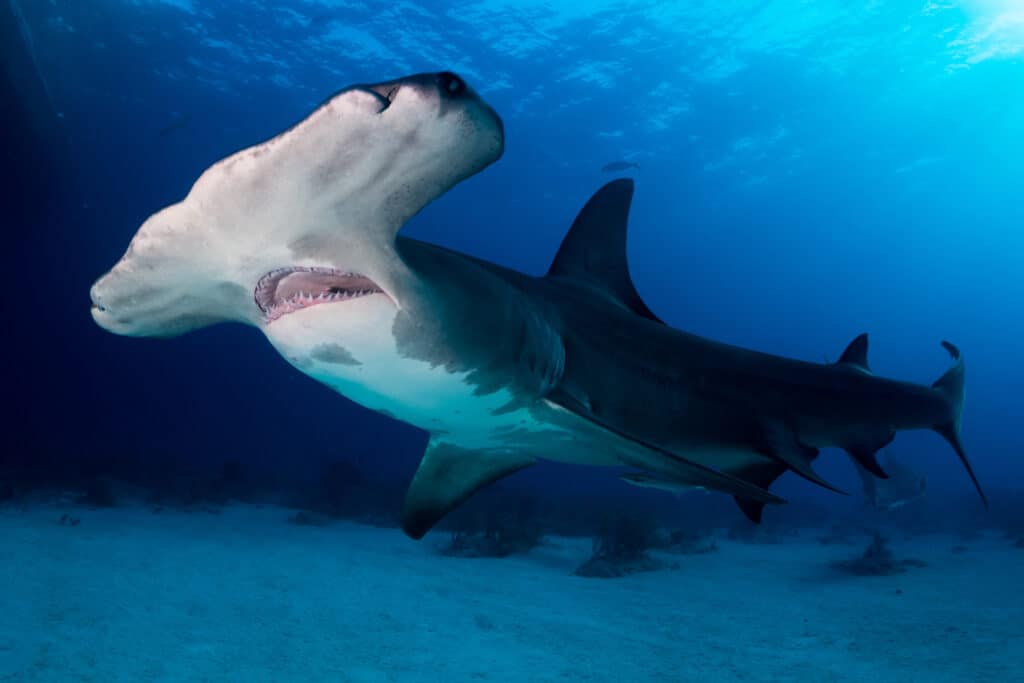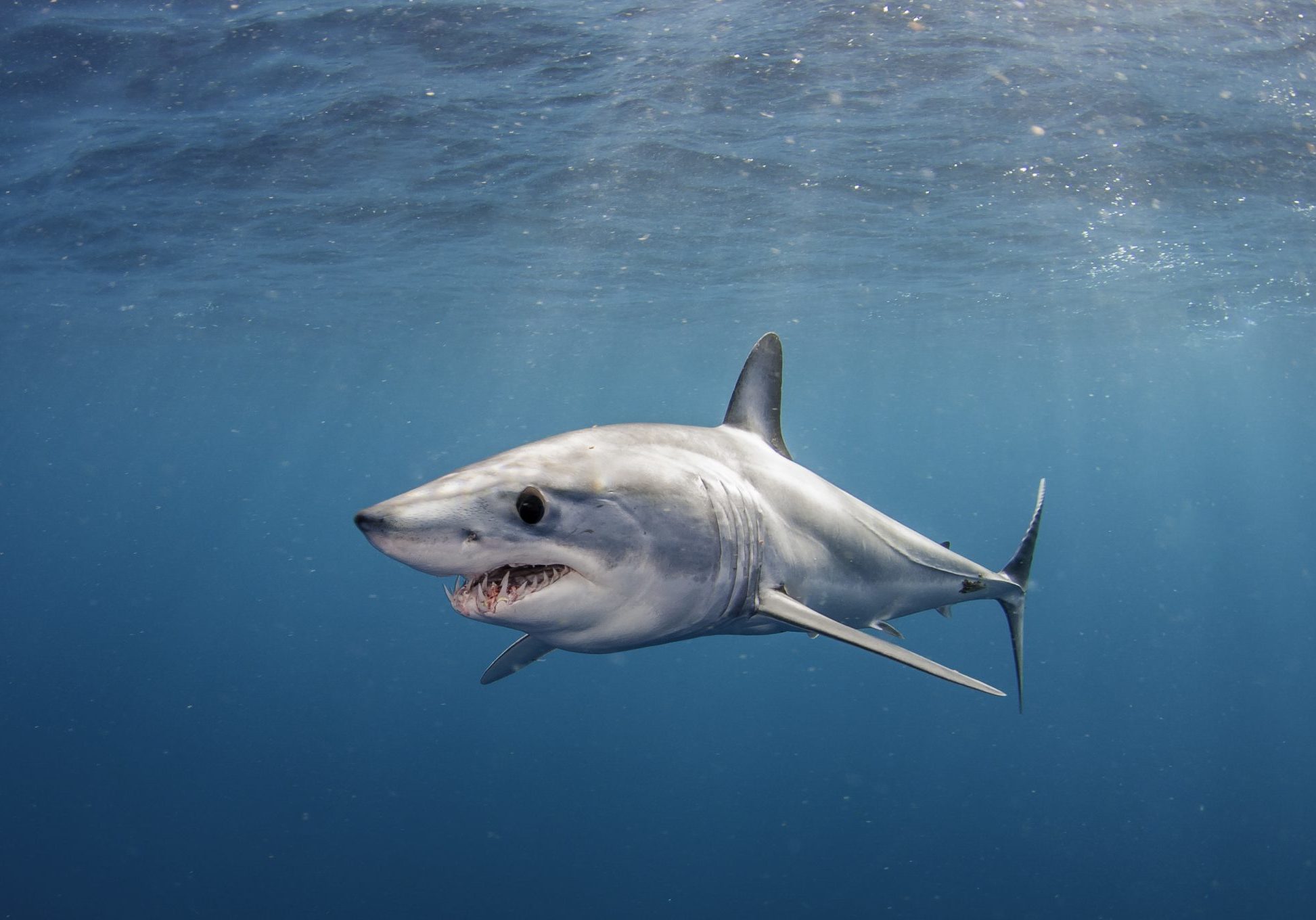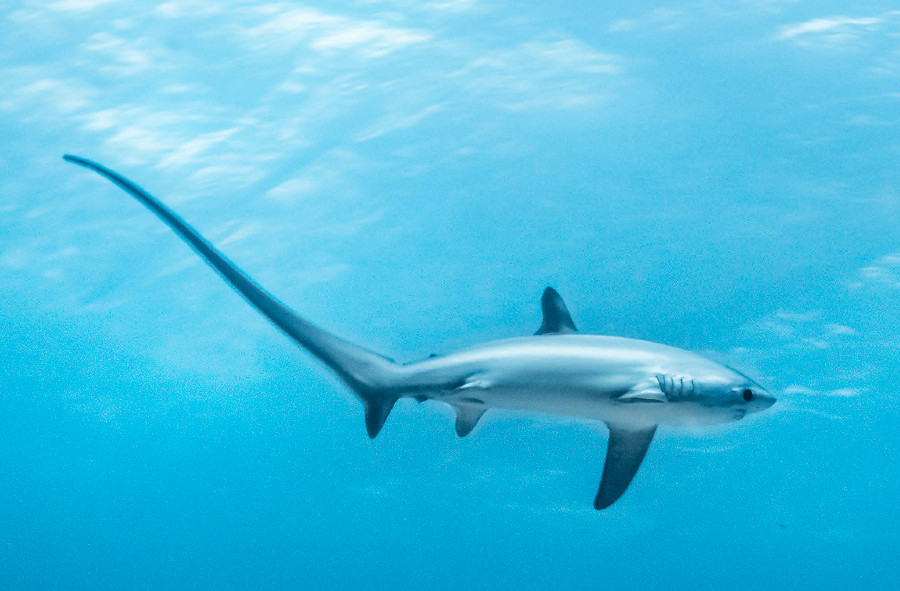Sharks are some of the most fascinating creatures in the ocean, and their speed is one of the most impressive things about them. Some sharks can swim at incredible speeds, making them some of the fastest creatures in the ocean.
In this article, we will explore the top 10 fastest sharks found in U.S. waters and where you might encounter them. From the shortfin mako shark to the bull shark, we will take a closer look at these amazing creatures and their impressive speed.
You are reading: The Top 10 Fastest Sharks Found In U.S. Waters And Where You Might Encounter Them
Whether you are a shark enthusiast or just curious about these fascinating creatures, this article will provide you with some interesting insights into the fastest sharks in U.S. waters.

Top 10 Fastest Sharks Found In U.S. Waters And Where You Might Encounter Them
Shortfin mako shark

The shortfin mako shark is a large, predatory shark that lives in the open ocean and is known for its impressive speed. According to Oceana, the shortfin mako is the fastest shark in the world, capable of reaching top speeds of up to 45 miles per hour (74 kilometers per hour).
This species is found widely in tropical to temperate latitudes of all oceans, including U.S. waters. The shortfin mako shark is cylindrical in shape, with a vertically elongated tail. It exhibits countershading, with brilliant metallic blue coloration dorsally and white ventrally.
The species is sexually dimorphic, with females typically larger than males. An average adult specimen measures around 2.5 to 3.2 m (8.2 to 10.5 ft) in length and weighs from 135–230 kg (298–507 lb).
Salmon shark
The salmon shark (Lamna ditropis) is a species of mackerel shark that can be found in the northern Pacific Ocean. This apex predator feeds on salmon, squid, sablefish, and herring.
The salmon shark can grow up to 10 feet long, but the average length is usually in the 6.5-8 ft range. It has a short, compressed body with a short, cone-shaped snout and is often mistaken for a great white shark.
The salmon shark is known for its voracious appetite and its ability to maintain stomach temperature, which is unusual among fish. It is believed to range as far south as the Sea of Japan and as far north as 65°N in Alaska, particularly in Prince William Sound during the annual salmon run.
The species is also known for an unexplained variability in the sex ratio between eastern and western populations in the northern Pacific.
Blue shark
The blue shark (Prionace glauca) is a species of requiem shark that is known for its impressive speed. The blue shark can reach an average speed of up to 43 mph (70 kph), making it one of the fastest sharks in the ocean. The blue shark is found in deep temperate and tropical waters in the world’s oceans, and it can be observed by divers in temperate seas.
This species of shark has a long and slender build, with a blue coloration that is unique among sharks. The blue shark is an oceanic and epipelagic shark that can be found worldwide, from the surface to about 350 m (1,150 ft) deep.
Its main prey is squid, although it also eats fish, sea birds, and smaller sharks. Despite its reputation as a predator, the blue shark is not considered to be very aggressive.
Thresher shark

According to multiple sources, the thresher shark (Alopias spp.) is one of the fastest sharks in the ocean. Thresher sharks are a group of three existing species that live in all tropical and temperate oceans. They are large sharks that can reach lengths of up to 20 feet and have extremely long tails, which can be almost as long as their bodies.
Read more : The 10 Largest Octopuses In The World
Thresher sharks often whip their tails violently, frequently slashing or stunning their prey with them. They mainly feed on tuna and mackerel, but also sometimes prey on seabirds too. Thresher sharks can swim at speeds of up to 30 miles per hour (48.2 kph), according to Sharksider.
However, they can whip their tail at up to 80 mph (128.7 kph), which is much faster than their swimming speed. The thresher shark’s unique appearance, combined with the speeds that they can reach and their ability to jump out of the water, makes them a popular choice as a game fish.
Shortfin pilot whale
The shortfin pilot whale (Globicephala macrorhynchus) is not a shark, but a species of cetacean, which is a type of marine mammal. Therefore, it is not considered one of the fastest sharks in U.S. waters.
Shortfin pilot whales are found in both coastal and pelagic waters in temperate and tropical regions of the Indian, Atlantic, and Pacific Oceans. They prefer warmer tropical and temperate waters and can be found at varying distances from shore but typically prefer deeper waters.
Shortfin pilot whales are long-lived, slow to reproduce, and highly social animals. They are usually found in pods of 10 to 30 individuals, though groups of up to several hundred short-finned pilot whales have been reported in the Caribbean.
These pods are stable social structures, meaning that they form hierarchical associations that remain stable for generations, and are primarily thought to be matrilineal, i.e. led by an elder female relative, similar to those of resident killer whales.
Short-finned pilot whales have been nicknamed as the “cheetahs of the deep sea” for their deep, high-speed, sprint-dives to chase and capture large squid.
Great white shark
The great white shark (Carcharodon carcharias) is one of the most well-known and feared sharks in the world. The great white shark can swim at speeds of up to 25 miles per hour (40 kph), making it one of the fastest sharks in the ocean. Great white sharks are large mackerel sharks that can reach up to 20 feet in length and weigh up to 5,000 pounds.
They are considered to be the most dangerous of all sharks, given their unpredictable nature and their relatively high number of attacks on humans.
Despite their reputation, great white sharks are not considered to be very fast swimmers compared to other sharks. However, they are capable of faster speeds in short bursts, which they use to ambush their prey.
Hammerhead shark
According to the search results, the hammerhead shark is capable of reaching speeds of up to 20 mph. Hammerhead sharks are named for their distinctive hammer-shaped head, and there are nine species of hammerhead sharks, ranging in size from 2 feet 11 inches to 19 feet 8 inches.
They live in warm water around the world along coastlines and continental shelves, and they eat a wide variety of prey including fish, crustaceans, squid, octopus, stingrays, and other sharks. Hammerheads frequently swim along the ocean floor in search of food.
Although the hammerhead shark is not the fastest shark in the world, it is still capable of impressive speeds.
Tiger shark
The tiger shark (Galeocerdo cuvier) is a large macropredator and the only extant member of the genus Galeocerdo and family Galeocerdonidae. It is found in many tropical and temperate waters, especially around central Pacific islands.
The tiger shark is named for the dark stripes down its body, which resemble a tiger’s pattern, but fade as the shark matures. Females are capable of attaining a length of over 5 m (16 ft 5 in).
Tiger sharks are known for having the widest food spectrum of all sharks, with a range of prey that includes crustaceans, fish, seals, birds, squid, turtles, sea snakes, dolphins, and even other, smaller sharks. They are also known for eating garbage, including metal, plastic, wood, fishing gear, and other trash.
Tiger sharks are aggressive predators and have been known to attack humans, but they have a near completely undiscerning palate, so they are not likely to swim away after biting a human, as great whites frequently do. The decreasing population of tiger sharks has led the IUCN to list the species as near threatened.
Blacktip shark
Read more : The Top 13 Biggest Horses In The World
The blacktip shark (Carcharhinus limbatus) is a species of requiem shark that is known for its speed and agility. Blacktip sharks can reach speeds of up to 21 feet per second, or approximately 6.3 meters per second (21 ft/s), when they jump out of the water. This impressive speed makes them one of the fastest sharks in the world.
Blacktip sharks are usually found in groups of varying size, and they have a timid disposition. They are energetic predators that feed on a variety of prey, including fish, crustaceans, and squid.
Blacktip sharks are not the biggest sharks, with an average length of a little over 5 feet and a maximum weight of about 30 pounds. They are commonly found in warm waters around the world, including U.S. waters, and are known to be active and fast-swimming sharks.
Bull shark
The bull shark (Carcharhinus leucas) is a species of requiem shark that is commonly found worldwide in warm, shallow waters along coasts and in rivers. They are known for their aggressive nature and presence mainly in warm, shallow brackish and freshwater systems including estuaries and lower reaches of rivers.
Bull sharks are euryhaline and can thrive in both salt and fresh water, and they are known to travel far up rivers, including the Mississippi River as far as Alton, Illinois, about 1,100 kilometers (700 miles) from the ocean.
Bull sharks are medium-sized sharks, with thick, stout bodies and long pectoral fins. They are gray on top and white below, and the fins have dark tips.
Bull sharks are opportunistic predators and will eat almost anything, but their diet consists mainly of fish, including other sharks. They are considered to be one of the most dangerous sharks in the world due to their aggressive nature and their ability to survive in freshwater, which allows them to come into contact with humans more frequently.
FAQS
1. Which is the fastest shark in U.S. waters?
The shortfin mako shark is the fastest shark in U.S. waters, with a cruising speed of 31 mph and the ability to reach 46 mph in short bursts.
2. Where can I encounter the shortfin mako shark?
Shortfin mako sharks are found in temperate and tropical oceans around the world, including U.S. waters.
3. What is the second fastest shark in U.S. waters?
The salmon shark is the second fastest shark in U.S. waters, with a top speed of up to 45 mph.
4. Where can I encounter the salmon shark?
Salmon sharks are native to the North Pacific Ocean, where they are an apex predator.
5. How fast can the blacktip shark swim?
Blacktip sharks can reach speeds of up to 21 feet per second, or approximately 6.3 meters per second, when they jump out of the water.
6. Where can I encounter the blacktip shark?
Blacktip sharks are commonly found in warm waters around the world, including U.S. waters.
7. How fast can the tiger shark swim?
Tiger sharks can reach speeds of up to 20 mph.
8. Where can I encounter the tiger shark?
Tiger sharks are found in many tropical and temperate waters, including U.S. waters.
9. How fast can the hammerhead shark swim?
Hammerhead sharks can reach speeds of up to 20 mph.
10. Where can I encounter the hammerhead shark?
Hammerhead sharks are found in various warm and tropical waters, including U.S. waters.
Source: https://petstutorial.com
Category: Animals










